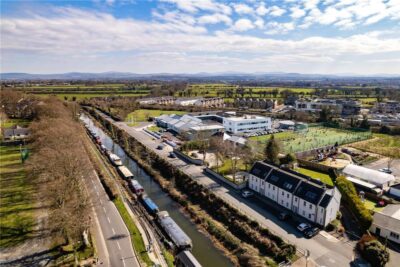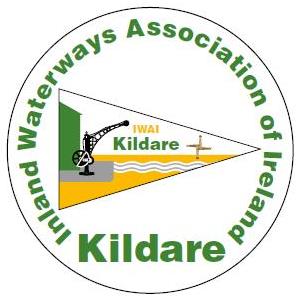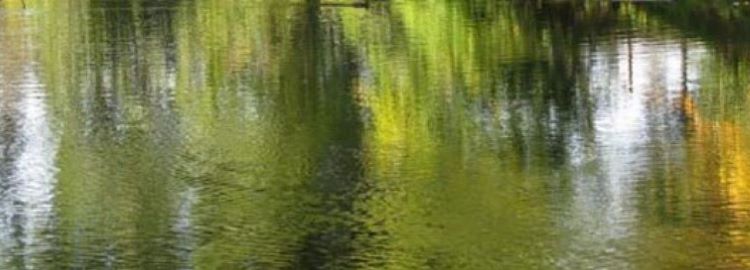Where it began ………..
Construction of the Grand Canal started in Kildare, near Sallins.
In 1756, Thomas Omer, Engineer to the Board of the Inland Navigation, commenced work on the Grand. Thousands of men are reputed to have been employed digging the channel and building the various structures along its length using stone from the Golierstown Quarry. By 1759, a navigation channel two miles west of Sallins and eight miles towards Dublin was complete. Six bridges and three locks were finished by 1763.
Sallins – today
Today Sallins is a boating centre with both serviced linear moorings to the east of Sallins Bridge and grass moorings on the west side, extending to Soldier’s Island.
The navigation and much of these early structures from the 1750s are still in existence, including the navigation channel itself with its stone walls, the six bridges and the three locks where the shape of the original structures can be seen.
Sallins is a stop on the “Green and Silver” Tourism Route. The Grand, Royal and Shannon form a triangular navigation extending from the Liffey in Dublin to Shannon Harbour on the Grand Canal; Clonmacnoise, Athlone and Lanesborough on the River Shannon; and Clondara, Mullingar, Enfield and Kilcock to Dublin on the Royal Canal.
Grand Canal – History 1938
A PIONEER Of TOURS IN IRELAND – Canal Company with its own Passenger Boats, Coach Services, and Chain of Hotels. Published March, 1938 in Irish Travel, the Official Organ of the Irish Tourist Association. (Written with acknowledgment to the courtesy of the Grand Canal and of its former Manager, the late Henry Phillips.) See Passenger Boats.
The history of inland. Navigation in Ireland goes back to as far as 1644, when, in the Vice Royalty of the Duke of Ormonde, the question of the “making of rivers navigable” was referred to a Council of Trade.
But the story of a famous Irish Canal – the Grand Canal – begins, properly speaking, in 1772 with the formation of “The Company of Undertakers of the Grand Canal” to take over a scheme into which for sixteen sorry years previously both State and Municipal authorities had been pouring fruitless thousands of pounds.
The interest of Government failure and the final success of private enterprise is quickened, in the case of the Grand Canal history, by many an unique facet – to wit: it is now the only Canal Company in Great Britain or Ireland with its own carrying fleet; it serves a total of some 352 miles, connecting Dublin with the Rivers Shannon and Barrow; part of its course is carried high over the central bogs of Ireland between artificial embankments; and, until railway competition became too acute, it was the owner of hotels, passenger boats, and coaching arrangements, offering transport, accommodation, and tours to travellers, for 73 years – from 1780 to 1852.
The Good Old Times.
In 1780 the “fly” or passenger boat service was inaugurated on the Grand Canal, its first sailing (from Dublin to Oberstown) being duly noticed in “Faulkner’s Dublin Journal.” Previous to this, travelling facilities in Ireland were altogether inadequate, the only coaches leaving Dublin for the west and south of Ireland being to Kilkenny (four days a week), Limerick and Athlone (twice a week), and Bin and Banagher (once a week. Travellers to Cork could get a coach only as far as Kilkenny, having to proceed thence by postchaise. Nor were the roads good, while tolls were high and the accommodation in the coaches was far from pleasant or satisfactory. The journey from Galway to Dublin occupied three days, and up to 1789 the coaches had no springs!
Hence, the new service by Canal created no little stir among the travelling public. It proved a definite success, the numbers of boats and passengers steadily increasing.
In Gorgeous Array (but Armed).
The boats were drawn by two horses, with postilions, who, in 1802, had hats with gold bands, Jackets, and leather breeches. Later, their uniform grew in gorgeousness, but they always carried pistols and blunderbusses, kept loaded, and probably used on many an occasion. Boarding pikes were also provided for close attacks.
A Frenchman’s Views.
The earliest reference in tourist literature to these fly boats or canal packets is that by M. de Latocnaye in his book, “A Frenchman’s Walk Through Ireland in 1796-7.” He writes that the boats were very comfortable, and resembled those of Holland, but that the fares were high. He praises the workmanship of the Canal, being much impressed by the aqueducts. He did not like the conversation on board – it was too political.
Week-end to Tullamore.
Many small items of interest hark back to the different years of the “fly” boat history – for instance, in 1790 an Inspector of Passage Boats was first appointed; in 1794 tickets were first used, and in 1804 no less a personage than Lord Dunboyne was named Inspector General of the Passenger System. When the extension of the Canal to Tullamore was completed, in 1798, the number of week-end trippers by canal to the town taxed the Sunday accommodation so severely that the Catholic Church had to be enlarged, a liberal subscription to this end being put up by the Company.
Additional sailings were made to cope with traffic for such purposes as Law Assizes, Quakers’ meetings, fairs, festivals, and cock-fights-the latter being catered for by the conveyance of both passengers and game-cocks to the nearest landing stage.
Linking Up the Coach Routes.
From 1791 onwards the Company decided to link up by coach services places on the Canal with towns many miles distant. Thus were instituted many coach services run in connection with the boats for the convenience of canal passengers. The through fare, Dublin to Ballina, for example, first cabin and inside of coach, was £2 2s. in 1798. In 1836 arrangements were made with Bianconi to run his long cars in connection with the packet boats. In 1840, under this arrangement, 10,339 passengers were carried on three of the “through” rates.
Dublin-Athy in 7 ½ Hours!
Reduction in fares and acceleration of mail and stage coaches, added to the introduction of caravans and long cars, enticed a number of passengers from canal to road traffic just before 1833, but the Canal Company then set about competing, in dead earnest, by building new and lighter boats drawn by three horses at an increased speed. As a result, the numbers of passengers carried were soon doubled, while the journeys were effected more quickly. In 1837 one could journey by day boat from Dublin to Athy (54 miles) in 7 ½ hours and by night in 12 ¾ hours.
These swift, spacious boats were very much appreciated in their day. One Jonathan Binns, of Lancaster, speaks highly, in 1837, of their comfort and speed, while, writing in 1844, Dr. James Johnson describes graphically their swift grace which he “had never seen equalled in Holland or elsewhere.”
A Chain of Hotels.
In 1785, the year after the Canal had been extended to Robertstown, the Company erected a hotel at Sallins. In 1801 the building of a hotel at Robertstown was completed at a cost of over £7,000, and one at Tullamore for more than £4,000. In 1806 the hotel at Shannon Harbour (from the steps of which Father Mathew later administered his pledge) was erected at a cost of some £5,000. From Shannon Harbour terminus many thousands of emigrants started for their long journey to America, bringing large quantities of oaten bread for the voyage. Mrs. Wynne and Mrs. Rigney, far-famed bakers of oaten bread at Shannon Harbour, had a roaring trade in this commodity.
But the most famous of all the Canal Hotels was the fine building at Portobello (1807), which cost almost £11,000. Made of stone from Tullamore, slates from Killaloe, and chimney pieces of Offaly marble, this fine hotel was far beyond anything of its time and place. At Portobello, breakfast with eggs was Is. 8d.; dinner, 2s. 2d.; tea and coffee, Is., and room with one bed, 3s. 3d. Accommodation was less high in the other Canal Hotels. But in 1813 the Company retired from the management of the hotels and let them to hotel- keepers, Portobello being rented at £520 per annum.
A Pioneer of Tours.
Thus, with its linking up of boat, coach, and hotel over a wide system, the Grand Canal Company may be truly acclaimed the Pioneer of Tours in Ireland.
But a serious rival to long-established and popular Canal Passenger Traffic was at hand with the opening up and extension of the Railways, from the ‘forties of the nineteenth century onwards. Competition waxed acute, fares falling with a rapidity that bespoke final capitulation. In 1851 a Canal-issued ticket from Killaloe to Dublin (118 miles) was 4s. 6d., and from Dublin to Shannon Harbour, 6s. 6d. In 1852 the Canal Company found it no longer profitable to continue running their passenger packets, and the famous fly boats ceased after a glorious spell of seventy three years, during which they had “writ history large” in the Book of Transport. March 1938
Industrial Heritage on Kildare’s Canals
Kildare is home to many interesting canal features constructed from the 1750s onwards, including:
- Corbally Canal and Harbour
- Digby Bridge Four Pots overflow system
- Liffey Aqueduct
- Lowtown Transhipment Sheds, Agent’s House and Lockkeeper’s Cottage
- Monasterevin Harbours and Lifting Bridge
- Naas Harbour and Canal Stores
- Robertstown Harbour, Hotel and Stables
- Sallins Drydock
- Skew Bridges on the Naas Canal and in Allenwood
- Trading Barges on the Grand Canal

Aerial view of Sallins Moorings by © E Dempsey

